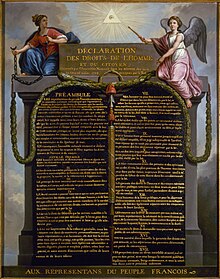The International Council on Monuments and Sites is a professional association that works for the conservation and protection of cultural heritage places around the world. Now headquartered in Charenton-le-Pont, France, ICOMOS was founded in 1965 in Warsaw as a result of the Venice Charter of 1964 and offers advice to UNESCO on World Heritage Sites.

Cultural landscape is a term used in the fields of geography, ecology, and heritage studies, to describe a symbiosis of human activity and environment. As defined by the World Heritage Committee, it is the "cultural properties [that] represent the combined works of nature and of man" and falls into three main categories:
- "a landscape designed and created intentionally by man"
- an "organically evolved landscape" which may be a "relict landscape" or a "continuing landscape"
- an "associative cultural landscape" which may be valued because of the "religious, artistic or cultural associations of the natural element."
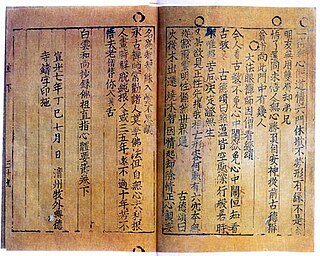
Jikji is the abbreviated title of a Korean Buddhist document whose title can be translated to "Anthology of Great Buddhist Priests' Zen Teachings". Jikji Simche means, "If you look at a person's heart correctly through the Zen meditation, you will realize that the nature of the heart is the heart of Buddha.". Printed during the Goryeo Dynasty in 1377, it is the world's oldest extant book printed with movable metal type. UNESCO confirmed Jikji as the world's oldest metalloid type in September 2001 and includes it in the Memory of the World Programme.
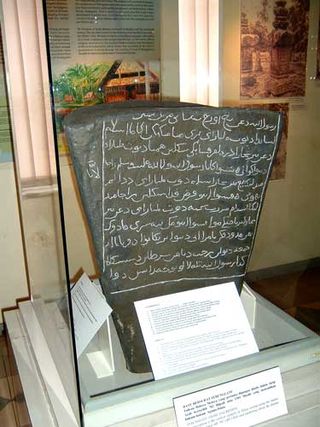
Terengganu Inscription Stone is a granite stele carrying Classical Malay inscription in Jawi script that was found in Terengganu, Malaysia. The inscription, dated possibly to 702 AH, constituted the earliest evidence of Jawi writing in the Malay world of Southeast Asia, and was one of the oldest testimonies to the advent of Islam as a state religion in the region. It contains the proclamation issued by a ruler of Terengganu known as Seri Paduka Tuan, urging his subjects to extend and uphold Islam and providing 10 basic Sharia laws for their guidance.

The World Heritage Convention, formally the Convention Concerning the Protection of the World Cultural and Natural Heritage, is an international treaty signed on 23 November 1972, which created the World Heritage Sites, with the primary goals of nature conservation and the preservation of cultural properties. The convention, a signed document of international agreement, guides the work of the World Heritage Committee. It was developed over a seven-year period (1965–1972).
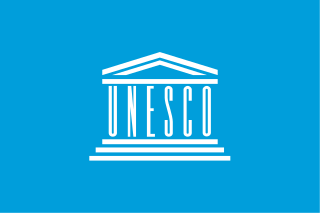
The United Nations Educational, Scientific and Cultural Organization (UNESCO) is a specialized agency of the United Nations (UN) with the aim of promoting world peace and security through international cooperation in education, arts, sciences and culture. It has 194 member states and 12 associate members, as well as partners in the non-governmental, intergovernmental and private sector. Headquartered in Paris, France, UNESCO has 53 regional field offices and 199 national commissions.

The International Centre for the Study of the Preservation and Restoration of Cultural Property (ICCROM) is an intergovernmental organization dedicated to the preservation of cultural heritage worldwide through training, information, research, cooperation and advocacy programmes. It aims to enhance the field of conservation-restoration and raise awareness to the importance and fragility of cultural heritage.
The first inscriptions on the UNESCO Memory of the World International Register were made in 1997. By creating a compendium of the world’s documentary heritage – manuscripts, oral traditions, audio-visual materials, library and archive holdings – the program aims to tap on its networks of experts to exchange information and raise resources for the preservation, digitization, and dissemination of documentary materials. As of 2018, 432 documentary heritages have been included in the Register, among them recordings of folk music, ancient languages and phonetics, aged remnants of religious and secular manuscripts, collective lifetime works of renowned giants of literature, science and music, copies of landmark motion pictures and short films, and accounts documenting changes in the world’s political, economic and social stage. Of these, 24 properties were nominated by countries from the region of Africa.
The first inscriptions on the UNESCO Memory of the World International Register were made in 1997. By creating a compendium of the world's documentary heritage—manuscripts, oral traditions, audio-visual materials, library and archive holdings – the program aims to tap on its networks of experts to exchange information and raise resources for the preservation, digitization, and dissemination of documentary materials. As of 2018, 432 documentary heritages have been included in the register, among them recordings of folk music, ancient languages and phonetics, aged remnants of religious and secular manuscripts, collective lifetime works of renowned giants of literature, science and music, copies of landmark motion pictures and short films, and accounts documenting changes in the world's political, economic and social stage. Of these, thirteen properties were nominated by countries from the region of the Arab States.
The first inscriptions on UNESCO's Memory of the World Register were made in 1997. By creating a compendium of the world’s documentary heritage, including manuscripts, oral traditions, audio-visual materials, library and archive holdings, the program aims to promote the exchange of information among experts and raise resources for the preservation, digitization, and dissemination of documentary materials. As of December 2018, 429 main documentary heritages had been inscribed in the Register, with 116 of these from Asia and the Pacific.

The International Register of the UNESCO Memory of the World-Programme includes inscriptions from Europe and North America. As of December 2018, the region has 274 inscriptions of the 432 total inscriptions included in the Register.
The first inscriptions on the UNESCO Memory of the World International Register were made in 1997. By creating a compendium of the world's documentary heritage—manuscripts, oral traditions, audio-visual materials, library and archive holdings – the program aims to tap on its networks of experts to exchange information and raise resources for the preservation, digitization, and dissemination of documentary materials. As of 2018, 432 documentary heritages have been included in the Register, among them recordings of folk music, ancient languages and phonetics, aged remnants of religious and secular manuscripts, collective lifetime works of renowned giants of literature, science and music, copies of landmark motion pictures and short films, and accounts documenting changes in the world's political, economic and social stage. Of these, seven properties were nominated by international organizations.
The first inscriptions on the UNESCO Memory of the World International Register were made in 1997. By creating a compendium of the world’s documentary heritage—manuscripts, oral traditions, audio-visual materials, library and archive holdings – the program aims to tap on its networks of experts to exchange information and raise resources for the preservation, digitization, and dissemination of documentary materials. As of 2018, 432 documentary heritages have been included in the Register, among them recordings of folk music, ancient languages and phonetics, aged remnants of religious and secular manuscripts, collective lifetime works of renowned giants of literature, science and music, copies of landmark motion pictures and short films, and accounts documenting changes in the world’s political, economic and social stage. Of these, 93 properties were nominated by countries from the region of Latin America and the Caribbean.
The UK Memory of the World Register is part of the Memory of the World Programme.
The Canadian Commission for UNESCO (CCUNESCO), administered by the Canada Council for the Arts, is Canada's national commission for UNESCO, actively advancing the organization's mandate to contribute to peace based on the intellectual and moral solidarity of humankind by promoting cooperation among nations.
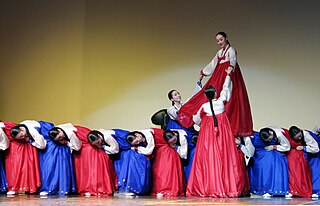
The heritage preservation system of South Korea is a multi-level program aiming to preserve and cultivate Korean cultural heritage. The program is administered by the Cultural Heritage Administration (CHA), and the legal framework is provided by the Cultural Heritage Protection Act of 1962, last updated in 2012. The program started in 1962 and has gradually been extended and upgraded since then.

Helena R. Asamoah-Hassan is a Ghanaian librarian who is the present Executive Director of African Library and Information Associations and Institutions (AfLIA), the Board Chair for the Ghana Library Authority and the Secretary General of African Regional Memory of the World Committee
Biosphere reserves are areas comprising terrestrial, marine and coastal ecosystems. The biosphere reserve title is handed over by UNESCO. Each reserve promotes solutions reconciling the conservation of biodiversity with its sustainable use. Biosphere reserves are 'Science for Sustainability support sites' – special places for testing interdisciplinary approaches to understanding and managing changes and interactions between social and ecological systems, including conflict prevention and management of biodiversity. Biosphere reserves are nominated by national governments and remain under the sovereign jurisdiction of the states where they are located. Their status is internationally recognized.

